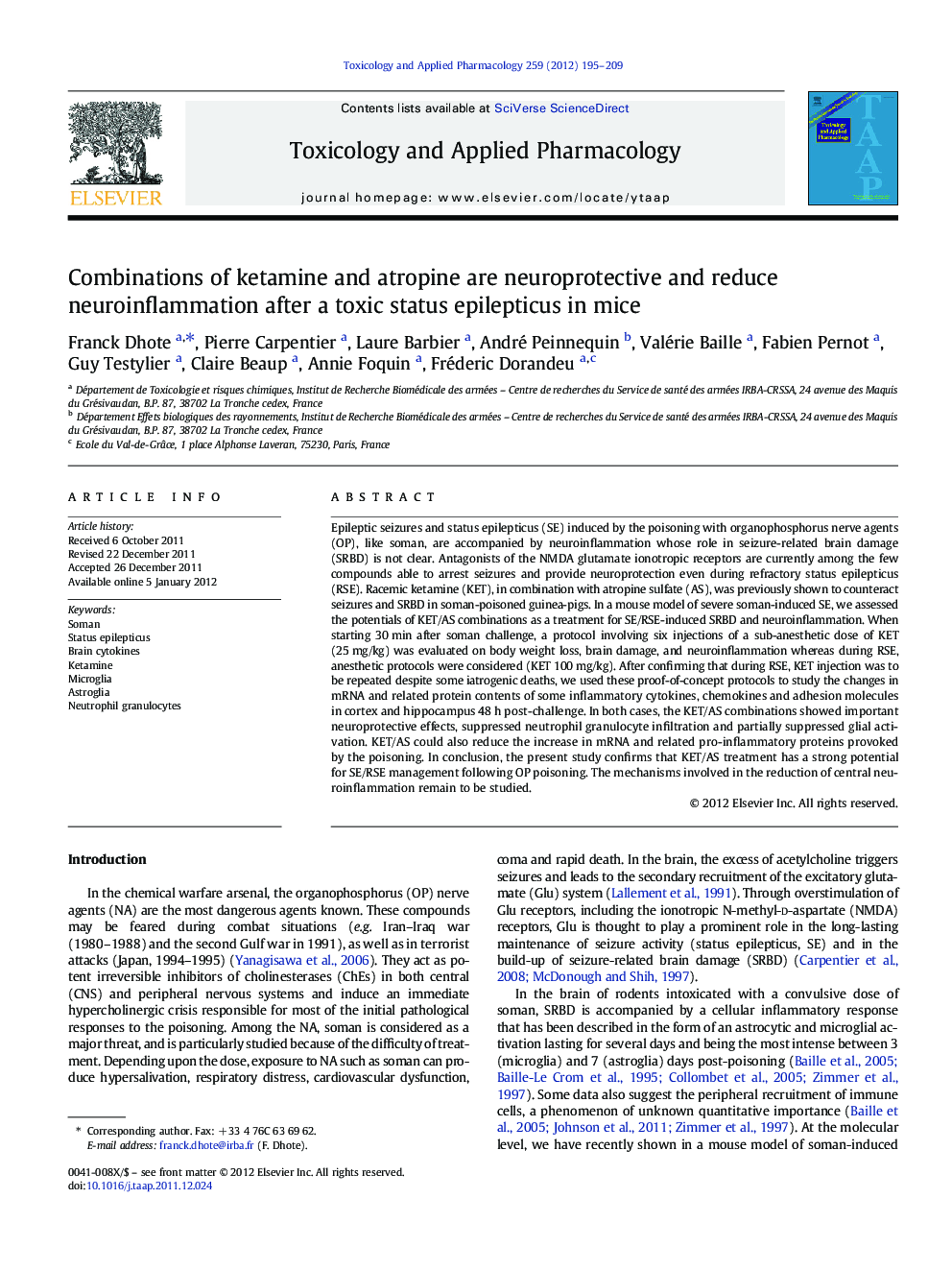| کد مقاله | کد نشریه | سال انتشار | مقاله انگلیسی | نسخه تمام متن |
|---|---|---|---|---|
| 2569157 | 1128513 | 2012 | 15 صفحه PDF | دانلود رایگان |

Epileptic seizures and status epilepticus (SE) induced by the poisoning with organophosphorus nerve agents (OP), like soman, are accompanied by neuroinflammation whose role in seizure-related brain damage (SRBD) is not clear. Antagonists of the NMDA glutamate ionotropic receptors are currently among the few compounds able to arrest seizures and provide neuroprotection even during refractory status epilepticus (RSE). Racemic ketamine (KET), in combination with atropine sulfate (AS), was previously shown to counteract seizures and SRBD in soman-poisoned guinea-pigs. In a mouse model of severe soman-induced SE, we assessed the potentials of KET/AS combinations as a treatment for SE/RSE-induced SRBD and neuroinflammation. When starting 30 min after soman challenge, a protocol involving six injections of a sub-anesthetic dose of KET (25 mg/kg) was evaluated on body weight loss, brain damage, and neuroinflammation whereas during RSE, anesthetic protocols were considered (KET 100 mg/kg). After confirming that during RSE, KET injection was to be repeated despite some iatrogenic deaths, we used these proof-of-concept protocols to study the changes in mRNA and related protein contents of some inflammatory cytokines, chemokines and adhesion molecules in cortex and hippocampus 48 h post-challenge. In both cases, the KET/AS combinations showed important neuroprotective effects, suppressed neutrophil granulocyte infiltration and partially suppressed glial activation. KET/AS could also reduce the increase in mRNA and related pro-inflammatory proteins provoked by the poisoning. In conclusion, the present study confirms that KET/AS treatment has a strong potential for SE/RSE management following OP poisoning. The mechanisms involved in the reduction of central neuroinflammation remain to be studied.
► During soman-induced status epilepticus, ketamine-atropine limit brain damage.
► Molecular neuroinflammatory response is strongly decreased.
► Glial activation is not fully suppressed.
Journal: Toxicology and Applied Pharmacology - Volume 259, Issue 2, 1 March 2012, Pages 195–209